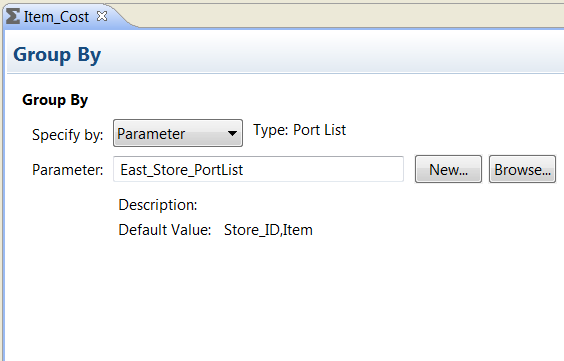Define Group By Ports
You can configure the Rank transformation to create groups for ranked rows.
For example, if you want to select the 10 most expensive items by manufacturer, you would first define a group for each manufacturer. In the Group By panel of the Rank tab, you can set one of the input, input/output, or output ports as a group by port.
For each unique value in the group port, the transformation creates a group of rows falling within the rank definition (top or bottom, and a particular number in each rank).
The Rank transformation changes the number of rows in two different ways. By filtering all but the rows falling within a top or bottom rank, you reduce the number of rows that pass through the transformation. By defining groups, you create one set of ranked rows for each group.
For example, if you create a Rank transformation that ranks the top five salespersons grouped by quarter, the rank index numbers the salespeople from 1 to 5 for each quarter:
RANKINDEX | SALES_PERSON | SALES | QUARTER |
|---|
1 | Sam | 10,000 | 1 |
2 | Mary | 9,000 | 1 |
3 | Alice | 8,000 | 1 |
4 | Ron | 7,000 | 1 |
5 | Alex | 6,000 | 1 |
Set the number of rows to include in a ranking on the Advanced tab of the Properties view.
Group By Parameters
You can configure a port list parameter that contains one or more ports to include in the group. Create a port list parameter by selecting ports from a list of the ports in the transformation.
The following image shows the Group By tab when you use a parameter to identify the ports in the group:
You can browse for a port list parameter or click New to create a port list parameter. If you choose to create a port list parameter, you can select the ports from a list of the ports in the transformation.

